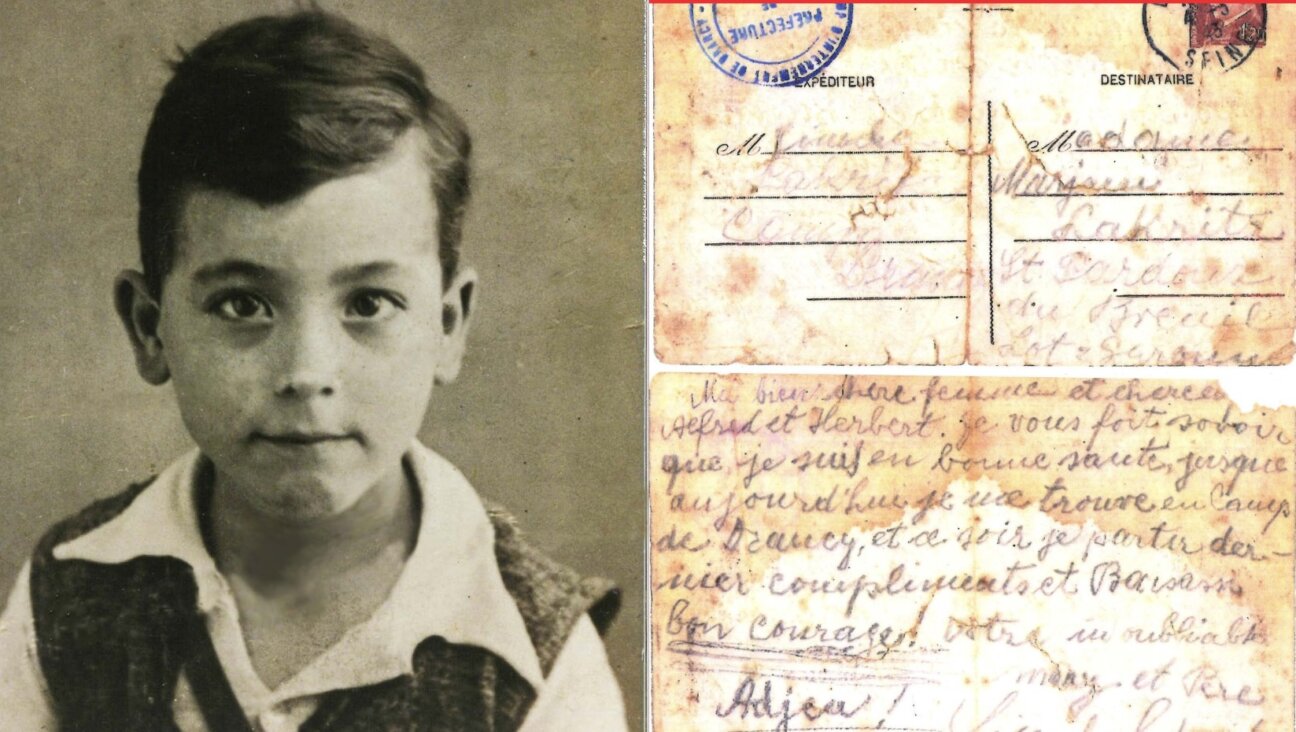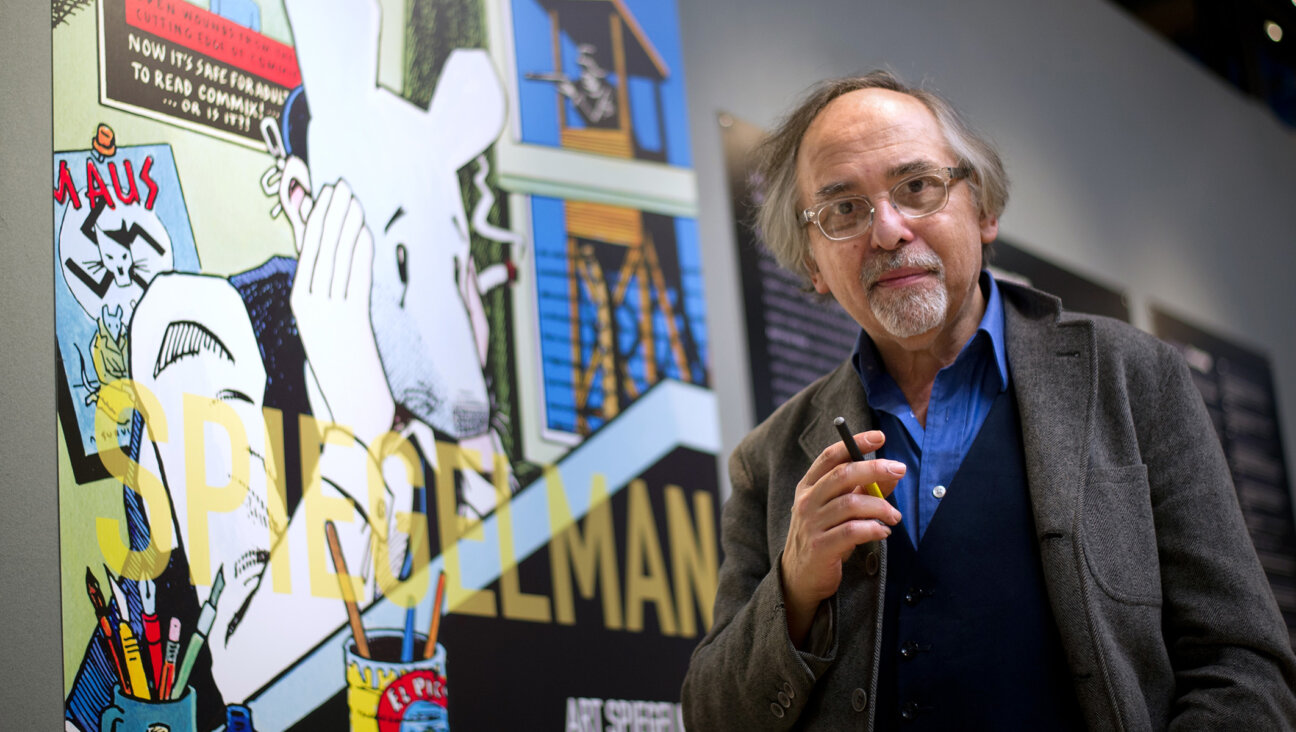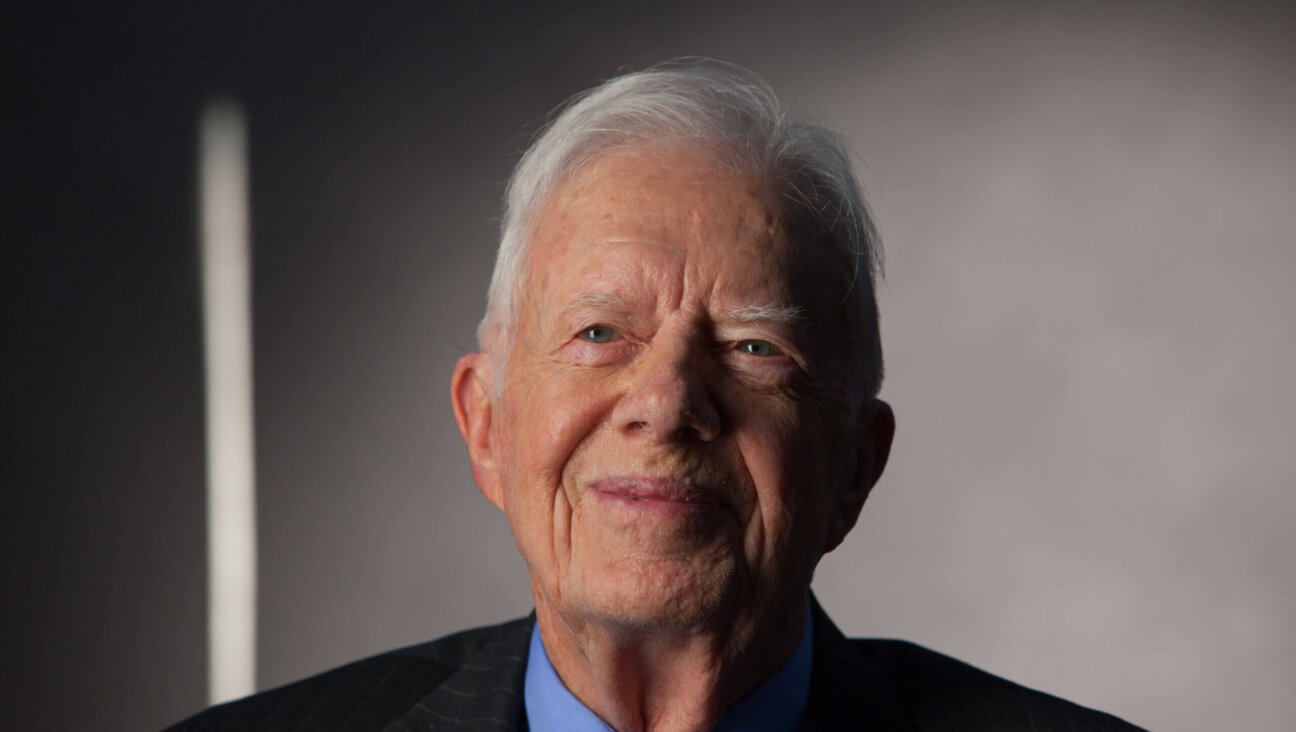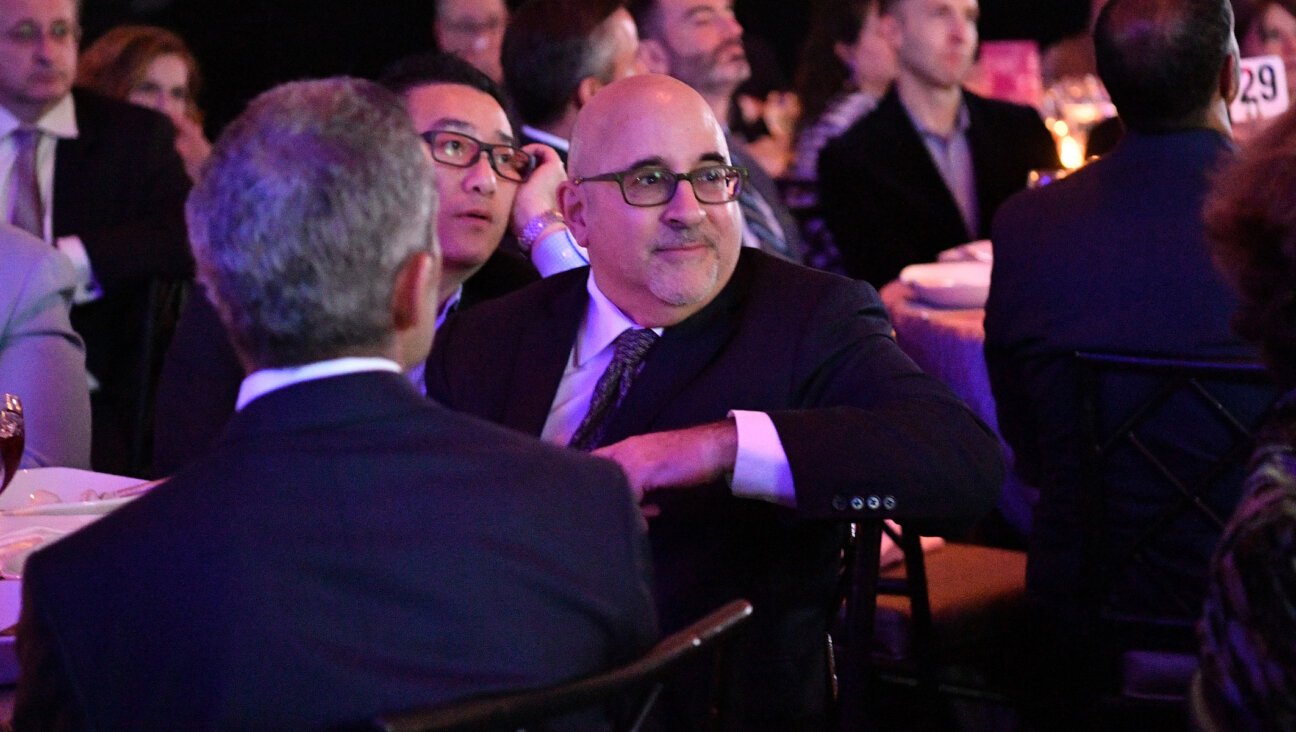What do the Egg, the Swan and the Ant Have in Common?

Distinctive: Arne Jacobsen in 1959. Image by Getty Images

Blue Room: The meeting room of the Royal Hotel in Copenhagen. Image by COURTESY OF RADISSON SAS ROYAL HOTEL
Appraisals of Arne Jacobsen’s life and work rarely take his Jewish background into account. But the 50th anniversary this year of Copenhagen’s Royal Hotel, one of the Modernist architect’s landmark achievements, presents an opportunity to reconsider a towering figure of 20th-century design — and how wartime experiences may have colored Jacobsen’s work.
A nonpracticing Jew, the designer was able to escape a planned Nazi roundup in 1943 and flee his native Denmark for Sweden — in a rowboat, at night. Jacobsen’s return to Copenhagen two years later led to a storied career that produced some of the most influential, and ubiquitous, designs of our era. His iconic Egg, Swan and Ant chairs alone have sold millions of copies, occupy museum collections and even furnished Stanley Kubrick’s 1968 film “2001: A Space Odyssey.”
Until the Nazi invasion, Jacobsen’s Jewishness barely played a role in his life. Born in 1902 in Copenhagen to upper-middle-class parents, Arne, the story goes, told his father he wanted to become an artist. Considering this an insubstantial career, his father nudged him toward studying architecture, which the elder Jacobsen deemed more practical.
After a stint as a bricklayer, Jacobsen won a scholarship to study architecture at Copenhagen’s Royal Academy of Arts in 1924. Like many young architects, he first won commissions for private homes. His distinctive style, a kind of rustic rationalism, led to success in designing home furnishings. When the war came, his work became endangered — and so, he believed, did his life.
While he was able to hang on to his design business from Sweden even during the war, it was after 1945 that Jacobsen’s enterprise really took off. Assignments kept getting bigger; one of his jobs, to furnish the headquarters of the Danish pharmaceutical company Novo Nordisk, led to the creation of the curvy, indented Ant chair. The now iconic Ant would go on to sell millions of copies worldwide — and earn Jacobsen a very comfortable living through licensing deals with manufacturer Fritz Hansen.
The curvy quality represented a shift for Jacobsen, whose designs always had been rather austere and spare. Much of this change was a reaction to a rigid Teutonic aesthetic that had overtaken Denmark during the war.
“For Jacobsen, becoming more fluid was a rebuke to everything the world had just gone through,” said Marc Spector, a New York architect who did graduate work on Jacobsen at the same Copenhagen school the master attended. “Obviously, Denmark wasn’t beaten up nearly as bad as Germany and France. When war did come, everything became very German, more rigid, more rectangular and more perfect than anything coming out of anywhere in Europe.”
As a Jew returning to this constricted environment, “it was probably very powerful to put his hands up and say he was going in the other direction,” said Spector, founder of the design firm Spectorgroup. “It was an about-face to all that rigidity.”

Distinctive: An Egg chair on display at a Jacobsen show in Milan. Image by Getty Images

Distinctive: Arne Jacobsen in 1959. Image by Getty Images
After Jacobsen designed the landmark SAS air terminal in Copenhagen, he won another huge job, which led to a turning point in his practice and to the whole gestalt of midcentury modern design.
Built in 1959, and opened in 1960 near Copenhagen’s Tivoli Gardens, the Royal Hotel was conceived in its entirety by Jacobsen. It’s widely considered the world’s first “designer” lodging, preceding Philippe Starck and Giorgio Armani’s haute hotels by decades. From doorknobs to chairs to the structure itself, Jacobsen imposed an obsessive vision on the property that merged a jet-age sensibility with sensual, human elements connected to nature through colors and such materials as wood.
“It’s pure art and architecture combined as one,” Spector said. “Jacobsen was given the ability to create everything, right down to the soap dishes. It’s a timeless piece of architecture and a national treasure.”
Now called the Radisson SAS Royal, the hotel actually stripped away much of Jacobsen’s design in the 1980s, when midcentury modern furniture fell out of fashion (“It’s like someone coming in and screwing with Frank Lloyd Wright’s ‘Fallingwater,’” Spector lamented). By the centennial of Jacobsen’s birth, in 2002, the pendulum had swung back, and the property was forced to buy replacements for priceless original furniture that new management had sold off cheap.
The hotel now feels like an amalgam of business-hotel sensibilities with Jacobsen’s jet-age vision. The Egg and Swan chairs he designed specifically for the property have become two of the best-selling seating designs in history, with licensed copies continuing to sell for as much as $15,000 each.
Jacobsen “would probably be happy the building is well maintained and everything is in good shape, but he wouldn’t approve of all the changes,” said general manager Roy Kappenberger, whose father oversaw construction of the hotel with the architect. “He was quite a difficult gentleman anyway. It was his baby and my father’s baby.” Kappenberger’s own father died in 1982, after decades as general manager.
Though Kappenberger remembers some discussion of the architect’s personal history, “Jacobsen wasn’t Jewish in a religious sense, and most Jews in Denmark don’t talk about their background. My father did mention it several times, because Jacobsen was a shrewd businessman. His royalty fees were done in a smart way, and very unusual at the time, for an architect. He would get a fee every time something in the hotel had to be replaced.”
In fact, according to Spector, Jacobsen anticipated a royalty system that “starchitects” like Michael Graves and Frank Gehry would perfect years later. “It’s a common thing now for architects to design flatware or whatever for Target, but no one else was doing this kind of thing back then,” he said.
Is it appropriate, in general, to draw any kind of straight line between Modernism and Jewishness? Spector hesitates, but does point out that rich Jewish patrons supported Modernism before the war. “Modernist architecture was in vogue in the 1930s. Jews had the means to support it,” he said. Even now, Spector said, Modernism continues to draw strong Jewish support: “I would say a large chunk of Jewish money champions contemporary architecture and Modernism in general — furniture design, lighting design, even landscape design.”
Ellen Lupton, a curator at the Smithsonian Institution’s Cooper-Hewitt National Design Museum and co-author of the recent book “Design Your Life: The Pleasures and Perils of Everyday Things” (St. Martin’s Press), agrees. “In the ’50s and ’60s in America, prosperous Jewish families were a big market for midcentury modern furniture,” she said. “They embraced contemporary design. I don’t think there’s a Jewish aesthetic in the work, but I think it’s interesting [that] there’s always been a big market among Jews for this kind of design.”
Jacobsen’s legacy is secure in the world, but what about at the Radisson SAS Royal? Kappenberger thinks it’s in good hands — his own. “We will protect the design he has done, and when we do refurbishments, we will keep it simple and functional, as he would have thought it should be,” he said. “As long as I’m here, we’re going to keep him in mind no matter what we do to this hotel. We have this wonderful, beautiful heritage, and we have to protect it. Why cheapen it?”
Michael Kaminer contributes arts and culture stories to the Forward.
A message from our Publisher & CEO Rachel Fishman Feddersen

I hope you appreciated this article. Before you go, I’d like to ask you to please support the Forward’s award-winning, nonprofit journalism so that we can be prepared for whatever news 2025 brings.
At a time when other newsrooms are closing or cutting back, the Forward has removed its paywall and invested additional resources to report on the ground from Israel and around the U.S. on the impact of the war, rising antisemitism and polarized discourse.
Readers like you make it all possible. Support our work by becoming a Forward Member and connect with our journalism and your community.
— Rachel Fishman Feddersen, Publisher and CEO






















